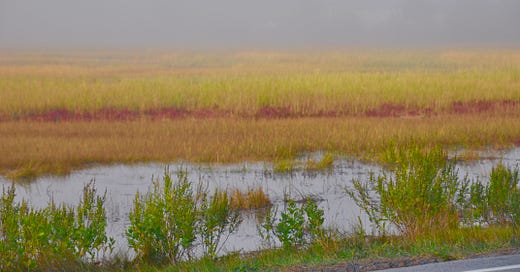From Boston to Washington
It’s all Baseline Creep
There is something wonderful about living in a small community whose rural nature doesn’t seem to change. But it is also edifying to get out to see the rest of the world.
So in early May I took a spring trip from Ipswich Massachusetts to Washington D.C. where I learned a valuable lesson about the concept of baseline creep.
Baseline creep is the tendency of scientists to mistake what they saw at the beginning of their careers as the appropriate baseline for what they consider to be natural.
It is impossible to see baseline creep from a plane, as well as being ecologically disastrous, so I opted for Amtrak’s clean, efficient Acela train. It was delightful trip. But when are they going to connect North Station and South station and Penn Station to Grand Central?
Be that as it may, from Boston to New York all I saw to my left were glimpses of beaches, and marshes, with their billowing waves of phragmites.
On my right all I could see were the blindingly white flowers of Bradford pears and the purple blossoms of wisteria and loosestrife. Then from New York to Washington all the waterways were choked with tropical water hyacinths, escaped from backyard ponds.
All of these plants are considered to be invasive species that must be eradicated at considerable cost to return the East Coast to its natural state.
But what is the East Coast’s natural state, what we remember growing up, what our father’s remember, the time before non-native Europeans arrived on this continent, the Ice Ages, the Age of Dinosaurs, or our present human altered planet?
Should we even undertake the Sisyphysian task of returning the East Coast to its natural state or concentrate on increasing biodiversity of the Anthropocene habitats we have already inherited?




